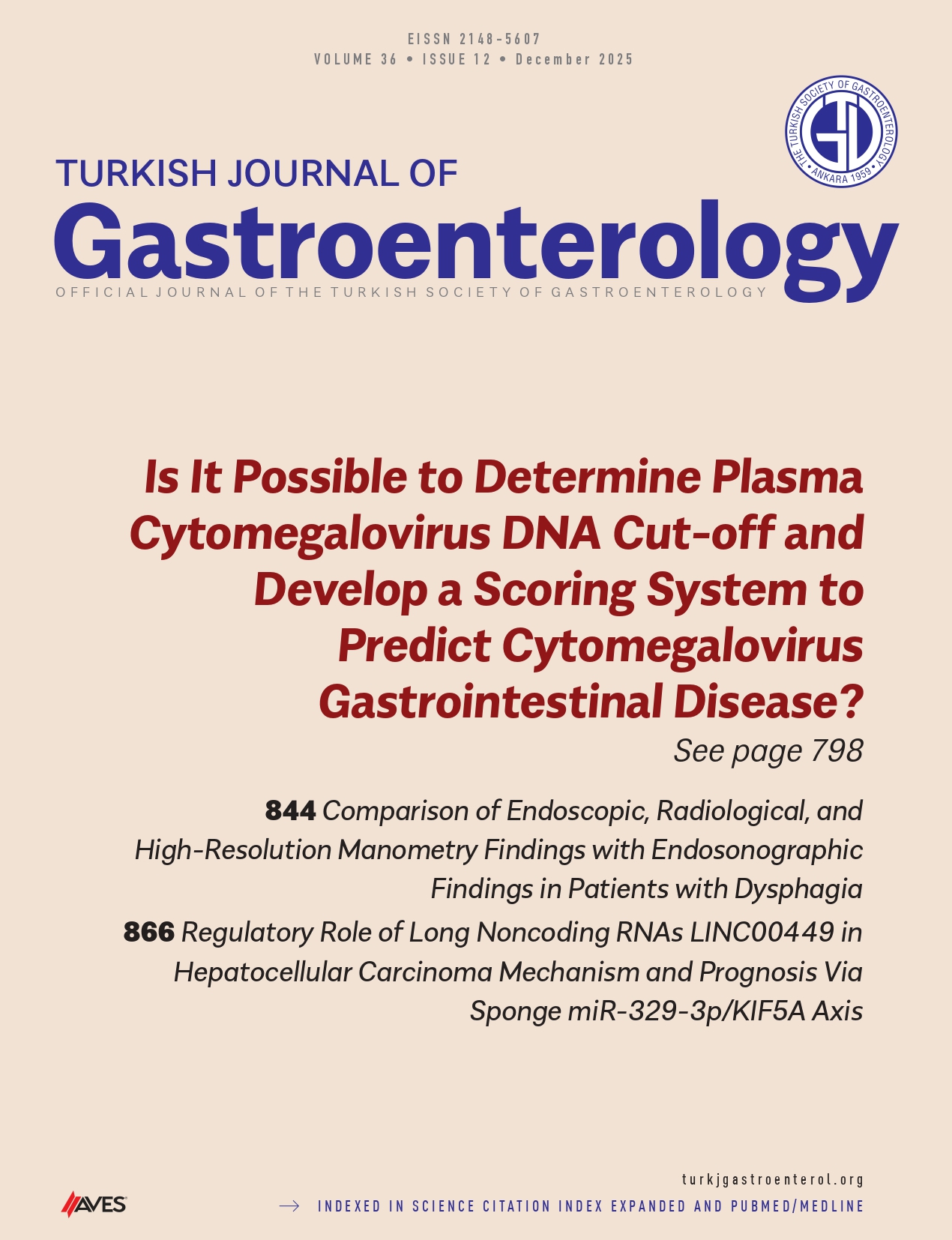Abstract
INTRODUCTION: Anti-HCV treatment in cirrhotic patients was less effective than in noncirrhotic patients in pre-direct-acting antiviral (DAA) era. In cirrhotics, a significant increase in the incidence of liver-related events, including mortality, is likely in the following years. The development and approval of several DAAs in recent years has revolutionized antiviral therapy especially for cirrhotic patients. Two societies in Turkey created an online database and collect data of patients with chronic hepatitis C (CHC) patients using in Turkey. We aimed to evaluate effectiveness and safety of DAA in cirrhotic CHC patients.
METHODS: 37 centers from Turkey recorded 1807 patients to the database. The centers well represented the country. Patients >18 years with CHC under DAAs were enrolled in this non-interventional observational study. Demographics, clinical information, DAAs used, efficiency and safety information were recorded Efficiency and safety results are given for the patients with 12 weeks after end of treatment (SVR12) data. The study was approved by ethics committee and registered to clinicaltrials.gov.
RESULTS: Among the 1807 patients; 238 (13%) were cirrhotic. Of those, 118 (49.6%) were male and mean age was 64.7±10.7 years. Among cirrhotics, 206 (86.5%) were compensated (Child-Pugh A) and 32 were (13.5%) decompensated (Child-Pugh B-C). The most common HCV genotype was G1: 215 (90.3%; among G1 93% G1b, 7% G1a), followed by G2 (9, 3.8%), G3 (9, 3.8%), G4 (3, 1.3%), G5 (1, 0.4%). Previous treatment information was available for 228 patients: 111 out of the patients (49%) were treatment-experienced (64, 58% relapser and 47, 42% non-responder): 89% had used peginterferon/ribavirin, 8% peginterferon/ribavirin+boceprevir and 4% peginterferon/ribavirin+telaprevir. Baseline viral load was 4.11 x106 copies/mL. Baseline laboratory studies were ALT 50 IU/L, AST 51 IU/L, albumin 3.9 g/dL, and prothrombin time 13.5 sec. DAAs given to the patients are shown in Table 1. Viral responses at treatment week 4, at the end of treatment and at SVR12 were 85% (147/173), 100% (188/188), and 98% (150/153) respectively (Figure 1). Laboratory studies at SVR 12 were ALT 23 IU/L, AST 28 IU/L, albumin 4.18 g/dL, and prothrombin time 12.7 sec. DAAs were generally well tolerated. On treatment; 53 patients (22.3%) experienced 88 adverse events: asthenia (9%), pruritus (8%), nausea (5%), insomnia (4%), headache (3%), herpes labialis activation (2%), anemia (15), and miscellaneous (5%).
CONCLUSION: Real-life data show that HCV treatment with DAA is highly efficacious and safe in cirrhotic patients as well. Being decompensated or decompensated, treatment-naïve or previously treated (relapse or non-responder) do not seem to affect the response rate.
*This study was supported by Gilead Sciences, was not involved to the content of the study/publication; no involvement to the decision to submit for publication.




.png)
.png)